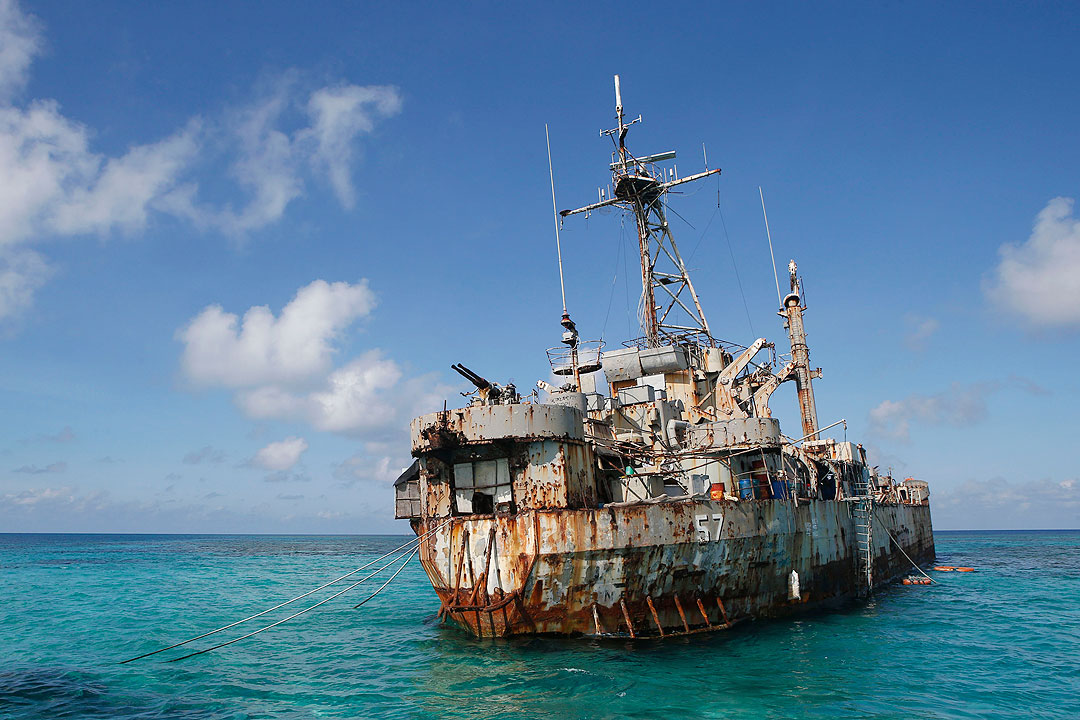Philippine resupply mission reaches outpost despite Chinese ‘blockade’

By Kyle Aristophere T. Atienza, Reporter
A PHILIPPINE resupply mission had reached a remote outpost at Second Thomas Shoal in the South China Sea on Tuesday despite attempts by Chinese ships to block the boats carrying fresh supply for Filipino marines, authorities said.
“The routine follow-on rotation and resupply mission to the BRP Sierra Madre was successfully conducted today,” the National Task Force for the West Philippine Sea said in a statement.
The National Security Council (NSC) said Philippine Navy vessels were also on standby during the mission.
A handful of Filipino troops are stationed at BRP Sierra Madre, a rusty World War II-era US ship that the Philippines intentionally grounded at Second Thomas Shoal in 1999 to assert its claim.
The shoal is about 200 kilometers (124 miles) from the Philippine island of Palawan and more than 1,000 kilometers from China’s nearest major landmass, Hainan Island.
President Ferdinand R. Marcos, Jr. has rejected claims by the Chinese government that it had agreed to remove the vessel from the disputed shoal.
China deployed four militia ships “to take up blockade positions” as the Philippines conducted the resupply mission, Raymond Powell, project lead at the Gordian Knot Center for National Security Innovation, said in a series of tweets.
He said China had also deployed 11 AIS-visible Qiong Sansha Yu militia ships starting Monday afternoon.
“Routine missions to Philippine outposts on various features in the West Philippine Sea will continue on a regular basis,” NSC said, adding that resupply missions are part of the Philippine government’s legitimate exercise of its administrative functions over its territories in the South China Sea.
The activities are in line with the United Nations Convention on the Law of the Sea and 2016 arbitral ruling that voided China’s claim to more than 80% of the South China Sea, it added.
Tensions between the Philippines and China worsened after the Chinese Coast Guard, backed by maritime militia ships, fired water cannons at Philippine vessels on a resupply mission to the shoal on Aug. 5.
Only one of the two boats chartered by the Philippine military managed to deliver food, water, fuel and other supplies to troops on BRP Sierra Madre.
“Understanding China’s behavioral pattern since 2008 shows that it is also quite wary of conducting back-to-back provocations in the South China Sea that can lead to major miscalculations,” said Don Mclain Gill, who teaches foreign relations at De La Salle University in Manila.
“While China sought to show that it was present in the area, it did not try to block the resupply mission in Philippine waters due to the critical international backlash it faced a few weeks ago,” he said in a Facebook Messenger chat.
The future remains uncertain, Mr. Gill said, noting that throughout the years, China has occasionally limited its assertive maneuvers in Philippine waters.
“Such timidness falls short of a clear and consistent position in the long term,” he said. “Therefore, it is likely for Beijing to resume its assertiveness if it feels that the international attention toward its belligerent posturing has decreased.”
The Aug. 5 incident prompted statements of concern from various countries, including the United States, Japan and Australia.
“The Philippines and like-minded partners should continue their proactive engagements to not only secure the rules-based order but also strengthen norms that China seeks to weaken,” Mr. Gill said.
“The bravery and indignant posture of our coast guardians and marines against their aggresors in our own maritime domains are commendable as the world sees how sovereign archipelagic nation like the Philippines values maritime and international laws,” said Chester B. Cabalza, founder of Manila-based International Development and Security Cooperation.
But the Philippines should find more ways to stop the Chinese Coast Guard’s aggression at sea, he said in a Facebook Messenger chat.



